What is Lean Six Sigma
Lean originated at Toyota in the ’40s and Six Sigma originated at Motorola in the ’80s. Although they’ve been taught as separate methods for many years, the line has dimmed and it’s now common to see Lean & Six Sigma teachings combined in order to produce the best of both areas.
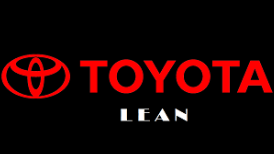

Lean Six Sigma is a combination of two popular Continuous Improvement methods—Lean and Six Sigma—that take any organization towards operational excellence.
Although Lean and Six Sigma are different processes, they are complementary and share many similarities that allow them to flow together seamlessly.
Lean uses the PDCA—Plan-Do-Check-Act/Adjust—method and tools like 8 Wastes and 5S to achieve continuous improvement.
Six Sigma uses the DMAIC— Define-Measure-Analyze-Improve-Control—method and tools like Control Charts and risk management tools like Failure Modes & Effects Analysis (FMEA) to achieve continuous improvement.
To successfully implement Lean Six Sigma, a combination of tools from both lean manufacturing and Six Sigma must be used. Some of these tools include kaizen, value-stream mapping, line balancing, and visual management.
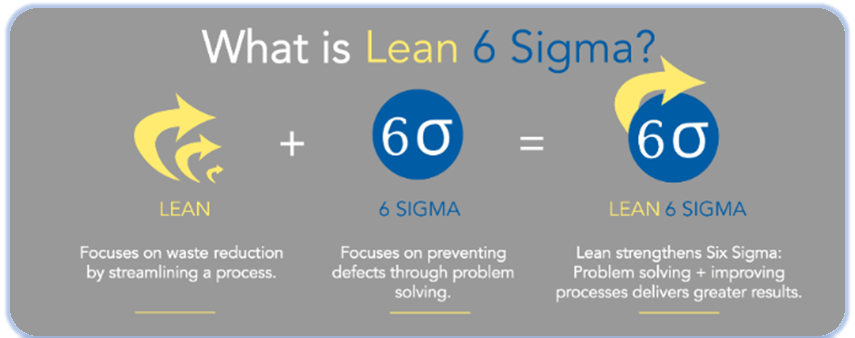
Certification Bodies
There is no central body of certification but By several measures, the IASSC and ASQ Lean Six Sigma Standards and Certifications are both internationally respected, recognized and utilized over the Lean Six Sigma Industry. They have their accredited subsidiaries or functions as well
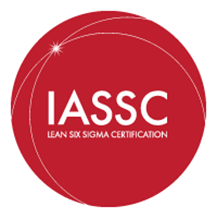
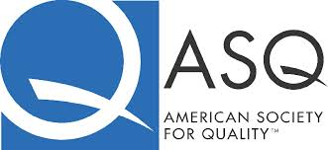
So, while choosing your training center, please check with the respective person on the same
Type of Certifications
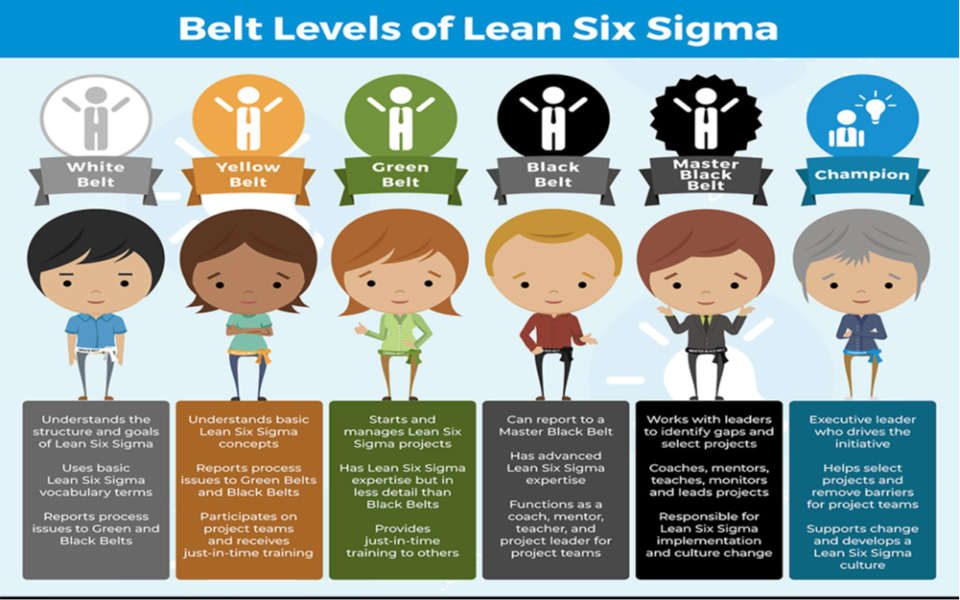
White and Yellow belt certifications are more Informatory and Awareness in nature.
A white belt certification is an option for professionals who are unsure about investing time and money in a six sigma learning journey. It will give them an idea for a very low cost.
Check here – Become A Certified Six Sigma White Belt
Master Black Belt & Champion may not be suitable for IT professionals, it goes into deep understanding and implementation. It’s recommended to practice Black Belt for 3-4 years before going for these two.
Green Belt Certification
A Green Belt in Six Sigma possesses a basic understanding of the business concepts and statistical analysis. Green belt are employees of an organization who have been trained on the Six Sigma improvement methodology and will lead a process improvement team as part of their full-time job or part-time job depending on their roles and organization needs
Roles and Responsibilities
- Drives process improvement initiative within its own functional area
- Selects other members of the team and define their R & R of his project
- Defines the goal of the project with the champion and team members
- Identifies training requirements for the team along with black belt
Ø Eligibility – No eligibility required
Ø Course – Lean + DMAIC (Define, Measure, Analyze, Improve, Control) Concepts
Ø Training & Certification –
- 2 days of training
- Certification duration – 2hour | Pattern – MCQ | Number of Questions – 80
- Passing score is 70 % (99.9% people pass)
Ø Certification Cost – $200 to $350 depending on the institute and place. In the Covid-19 era all the classes are done online so the prices may be much lesser)
Ø Ideal Candidates – While the training centers will pitch for everyone but its most useful for Operations Managers, Quality Managers, SQA’s, Quality Analyst, Quality Auditor, Quality Engineer
Ø Relevance in IT –
- It’s not must to have but good to have a certificate plus knowledge for the Ideal Candidates
- You will have credentials to get involve in lean six sigma projects for improvements along with your regular work
Black Belt Certification
Black Belts are highly trained in the art of improving results using lean concepts and advanced statistical analysis techniques. It is a full-time role that revolves around increasing top-line growth and reducing bottom-line costs.
Roles and Responsibilities
- Works as project leader on cross-functional project
- Trains others in LSS methodologies, tool, techniques, and concept
- Reviews the projects
- Communicates the status of projects to stakeholders
Ø Eligibility – No eligibility, but people who are not from the statistical background will find it tough
Ø Course – Lean + DMAIC (Define, Measure, Analyze, Improve, Control) in-depth
Ø Training & Certification –
- 6 days of classroom training
- Certification duration – 4 hours | Pattern – MCQ
- The passing score is 60~70% depending on where you are doing
- Project completion involving implementation of Lean Six Sigma tools from scratch
- Once you clear the certification exam and project completion – you shall receive a certificate from the respective agency
Ø Certification Cost – $350 to $480 depending on the institute and place. In the Covid-19 era all the classes are done online so the prices may be much lesser)
Ø Ideal Candidates – Operations Managers, Quality Managers, SQA’s, Quality Analyst, Quality Auditor, Quality Engineer
Ø Relevance in IT –
- You will have credentials to lead six sigma projects for improvements as your full-time job
- It has good market value as it gives you the entitlement of executing improvement projects on a larger scale.
Impact on Professional career
- With a lot of organizations executing transformational projects across all BU’s and verticals for improving performance and reducing cost, knowing the tools and techniques to achieve the same will certainly give you the edge among others.
- It will certainly give some edge against your peers, depends how you showcase the knowledge gained
- Again to make a long term impact on management it will depend on how much understanding you have in implementing practically rather than theoretical.
Verdict
- Green belt is good to have but not mandatory
- Black belt would be ideal for Managed Service Managers, Operations Managers, Quality Managers, SQA’s , Quality Analyst, Quality Auditor, Quality Engineer














